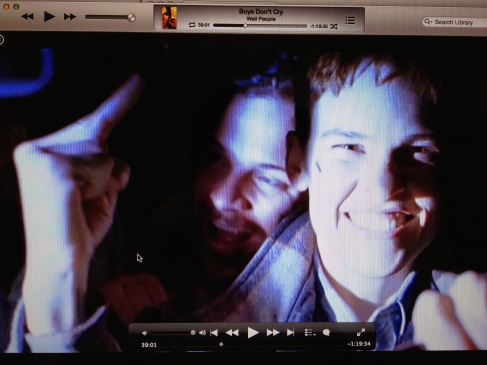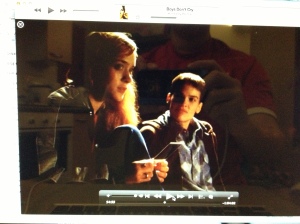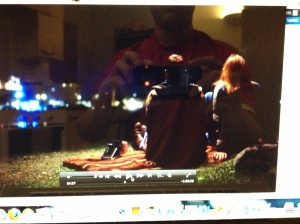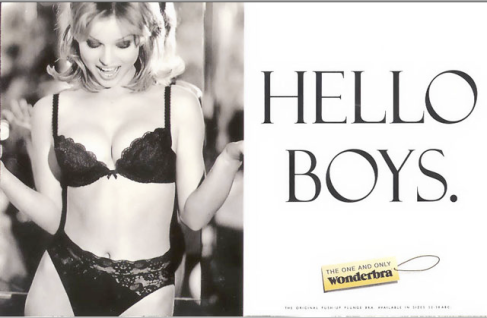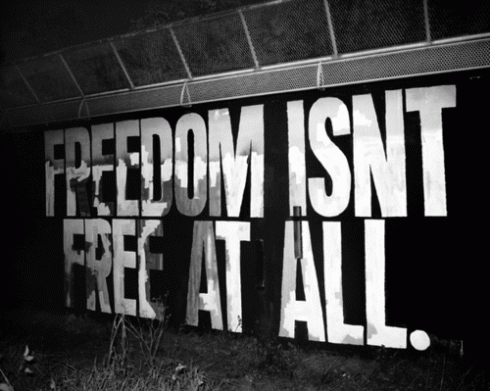http://www.racialicious.com/2012/11/06/why-is-the-normal-television-family-always-white/
Suggested reading list
– Media studies: a reader
– Representation: cultural representations and signifying practices
– Whitewash: racialised politics and the media
– White
Week 7: Race and Ethnicity in UK Film and TV
History of Race and Ethnicity in UK Film and TV:
- The first full length TV documentary programme to talk about Black immigrants in Britain was Special Enquiry: Has Britain A Colour Bar? (31 Jan 1955)- Important on this is because it provoked emotive responses from many White viewers who felt that it was a defense of Black people in its acknowledgement that racial discrimination existed in Britain.
- The first programme to recognize that a space should be created for a specific racial audience was Asian Club (BBC, 1953-1961)- Important on this is because this programme did indicate that efforts were being made to address non-English viewers.
- John Hopkins’ British-based anti-apartheid play Fable (BBC 1, 1965)- Important on this is because the show marked a racial use of form and content compared to the dominant representations of ‘race’ and hallmark of documentary realism hitherto deployed in race relations discourses.
- BBC set up the Independent Programmes Complaints Commision in October 1977- Important on this is because BBC would consider viewers’ complaints about particular radio and TV broadcast that can grow debate about the role of TV in social life.
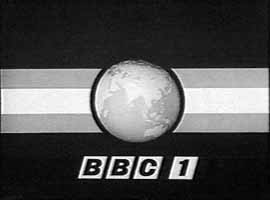
- In 1978, the soon-to-be-elected Prime Minister, Margaret Thatcher, echoed Enoch Powell’s infamous 1968 ‘Rivers of Blood’ speech when she spoke of the threat of being ‘swamped by alien cultures’- Important on this is because many people including Asian, African and Caribbean people in 1980s Britain began to use the collective term ‘Black’ as a political term.
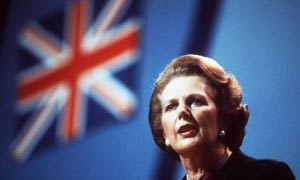
- Formation of Channel 4 in1982- Important on this is because Channel 4 is the first TV channel that set up for Black audiences, this provide a space for Black people to express their views in Britain.

- Channel 4 and Black British independent film practices- Important on this is because in the 1980s, contestation over national identity increasingly developed as a central political and social issue and as a preoccupation of emerged forms of representation.

- Formation of Channel 5- Deregulation and the Broadcasting Acts 1990 and 1996)

Week 6: Whiteness
Why do we not commonly talk of ‘white’ as racial marker?
– Invisibility of whiteness in popular culture means that ‘to say one is interested in race has come to mean that one is interested in any racial imagery other than that of white people’
– While whiteness is invisible, its sheer presence, if thoroughly assessed, could be found in many, if not all western texts, which speaks volumes about the integration between the culture of whiteness and the dominant culture
– ‘There is no more powerful position than that of being ‘just’ human’. The voice of white people has come to speak for the whole of humanity. Though we are brought up with enough ideologies from social institutions to accept the dominance of white culture to such a degree that no racial marker is needed in discourse to actually set ‘white’ standards as the human race’s standards.
– There is the recognition that white people don’t see their white privilege, and that ‘whiteness is nothing in particular’. How could one use whiteness as any mean of social measure when there is not one with which to identify, at least according to their western values?

Friends US TV show
http://www.imdb.co.uk/title/tt0108778/
The US TV show Friends (1994-2004) often draws criticism regarding its all white cast. Black characters from time to time are just one-off characters who often tread in the footstep of widely known stereotypes such as the loudmouth nurses, tough-as-nail bosses or dancers. It is not until its ninth year running that Friends finally introduce to viewers a reoccurring and significant love interest for some of its cast.
Week 5 assignment: Public Sphere
Distinction between public sphere and public space:
The first and foremost distinction between public sphere and public space is that, public space is rather an extension of the public sphere. Public space provides the facilities for public sphere, where something closed to public opinion can be formed, in a varying range of platforms. Papachirissi stated that, however, public space does not guarantee a ‘healthy public sphere’. The public sphere is where ‘rational’ discourse is discussed. Being a more complicated concept, public sphere requires several factors as requirements for its existence, the most popular of which is a reasoning public. The public has to be thoroughly informed of the information being discussed in order to have their say in public sphere. An example highlighting this distinction between public sphere and public space is a political discussion on an internet forum. In this way, the internet provides public space for a discussion about politics to exist. In the internet there exist the forum which people gather to express their political concerns, which is effectively public sphere. However, the internet in no way can carry out security checks to see if the people on the forum are harmful to society, or to a lesser extent, are equipped for a political matter in order to produce a sound public opinion of such subject.
The ways in which the internet enriches the democracy:
He particularly notice the use of blogs, while ‘narcissistically motivated’, adds plenty of voices and a higher sense of democracy on the internet. In this ways, subjects such as politics would become a more private matter on which individuals can provide their commentaries, with out shackles from social institutions such as the media. Rather than taking public agenda as their own private agendas, blogs encourage users to do the opposite, making their private agendas known to the public, in an effort to challenge public agendas generated by institutions
Extract: ‘This particular breed of narcissism has a democratizing effect. The subjective focus of blogs and similar forums encourages plurality of voices expands the public agenda. While narcissistically motivated, blogs are democratizing in a unique manner. As Bimber(2000) argues, while online technologies “contribute toward greater fragmentation and pluralism in the structure of civic engagement,” their tendency to “deinstituationalize politics, fragment communiation, and accelerate the pace of the public agenda and decision making may undermine the coherence of the public sphere”(p. 332-333). With their focus making a private agenda public, blogs challenge the established public agenda in an anarchic manner. This lack of coordination or concentrated civic objective limits the contribution to the public sphere, and exemplifies how online technologies enhance democracy in ways tangential to, but not directly connected with the public sphere.
an example of internet use that you think contributes to democratic possibilities:
It works because it provides alternative views that would draw immediate attention from large existing amount of people who regularly check the site on a daily or even hourly basis. It also attracts commentaries for through critical evaluation of said views as audience for the website are scattered around the globe.
Feminism, queer theory and visual culture
1) Repertoires of masculinity:
Signs of masculinity displayed in this scene for John Lotter
actions: sitting wildly, let the little girl drink his own beer, keep taking cigarette
Clothing: short sleeve t-shirt (showing muscle), using more dark colour, with jeans and sneakers
language: a lot of false language, talk loudly
way of looking: bear, with muscle, curly hair
Signs of masculinity displayed in this scene for Brandon Teena
action: driving car wildly, didn’t care about those girls in the car, having the middle finger up to enemies
Clothing: dark colour shirt, blue jeans and mens shoes, having a big biker coat with him.
language: didn’t speak a lot of false language but speak like a man
way of looking: short hair, act like a man
2) A pattern of looks
Who looks at Brandon? A: no one is looking him, Lana didn’t have eye contact with Brandon although she sit beside him
Who do Brandon look at and how? A: He look at Lana with a lovely face expression talking us (the audience) that he love her.
DO we look with certain characters and not with others? A: Yes, in this scene, it talks about Lana and Brandon only, this is a love scene and is only suitable for them only.
Whose eyes does the audience watch Brandon through? A: Lana, as his girlfriend
Do we see other characters through John or Brandon’e eyes? A: no, they are in the mode that only couples can go to and that mean they have each other only in their eyes.
Are we offered a separate gaze or do we take up the gaze of other characters in the film? A: We are offered a separate gaze in the film because the director give out the message of we need to look things in Brandon’s viewing point.
Post-feminism
‘Post-feminism’, as stated by Angela McRobbie, ‘refers to an active process by which feminist gains of the 1970s and 80s come to be undermined’.
Starting with the 1990s, clear and visible criticism of feminism is presented in the media. Through the use of articles right-leaning newspapers such as Daily Mail, as well as the resurgence ‘Lads Mags’, the iconography of the feminist started to be constructed in a certain unflattering way, such as ‘decisively aged’ and ‘redundant’. It led to creating ‘a distance from feminism’ from the part of young women, who grow up in a more gender-equal society that is hard fought by previous generations of feminists. As likely a result from the manipulating nature of the media, young women of the 90s onwards refused to be identified under the same ‘we’ with feminists.
However, it is this conflicting nature of the cultural space of post-feminism that help cement the existence of feminism into popular culture even more.
Post-feminism is also about subtle undoing of feminism in certain ways. Sexy ad campaigns featuring beautiful models, while still celebrating the immortal presence of the male gaze, is still self-conscious of the sexist nature of the ads themselves. There is an element of playfulness that separate these ads from the ads with the same characteristics decades before. The irony does not escape viewers either, as thanks to the media, male and female viewers alike are aware of the patriarchal values but are free to enjoy the ads without all the politics embedded with them.
http://www.youtube.com/watch?v=Ftde81QNXDY
Above is a link to a clip from The Simpsons TV show, showing a new Malibu Stacy doll line that speaks only sexist phrases that anger the feminist inside Lisa Simpson. Release in the mid 90s, the episode clearly strike into the cultural space regarding feminism and post feminism. However, we are doing so in a guilty and relaxing manner, as we are well aware of the tounge-in-cheek and ironic nature so often lying in the heart of ‘The Simpsons’.
Second week: Ideology, class and media
Jeremy Kyle repeats ideologically: “…if only the feckless underclass would behave with middle class norms then society would be in a better shape…”
Watching ideology, class and media:
- Individual pursuit if self interest will lead individuals to be productive and this will improve society
- Individualism provide common senses to middle class people, this can operates in an economically divided society and give as viewing pleasure.
- These programme makes we the audience think we are not the ‘worst’ individuals, we can see through ideology and we are knowledgeable and on the right side of the divide, even if we don’t have money.
Pleasures of Ideology
From Adomo and Horkheimer: ‘The triumph of advertising in the culture industry is that consumers feel compelled to buy and use its products even through they see through them.’
Media texts and their pleasures are part of his category of products-This is the pleasure of the MASS PRODUCTION.
First week: Ideology and the media
All the war-propaganda, all the screaming and lies and hatred, comes invariably from people who are not fighting.
George Orwell
A homogeneous definition for ‘Ideology’?
There are considerably various definitions for the term ‘ideology’. Within a sociological context, it could be simply put that ‘Ideology’ is a set of ideas shared about society that disguise the materialistic reality of society. In other words, ideology helps paint an impartial picture of the world. And these norms and values originate from no other group than the ruling class. It is argued that every social group existing in society would have its own idea of ‘ideology’, as they all have particular set of ideas about the world as deemed fitting. However, it is the values of those in power, mainly politicians and other figures from the upper class that are widespread in society.

